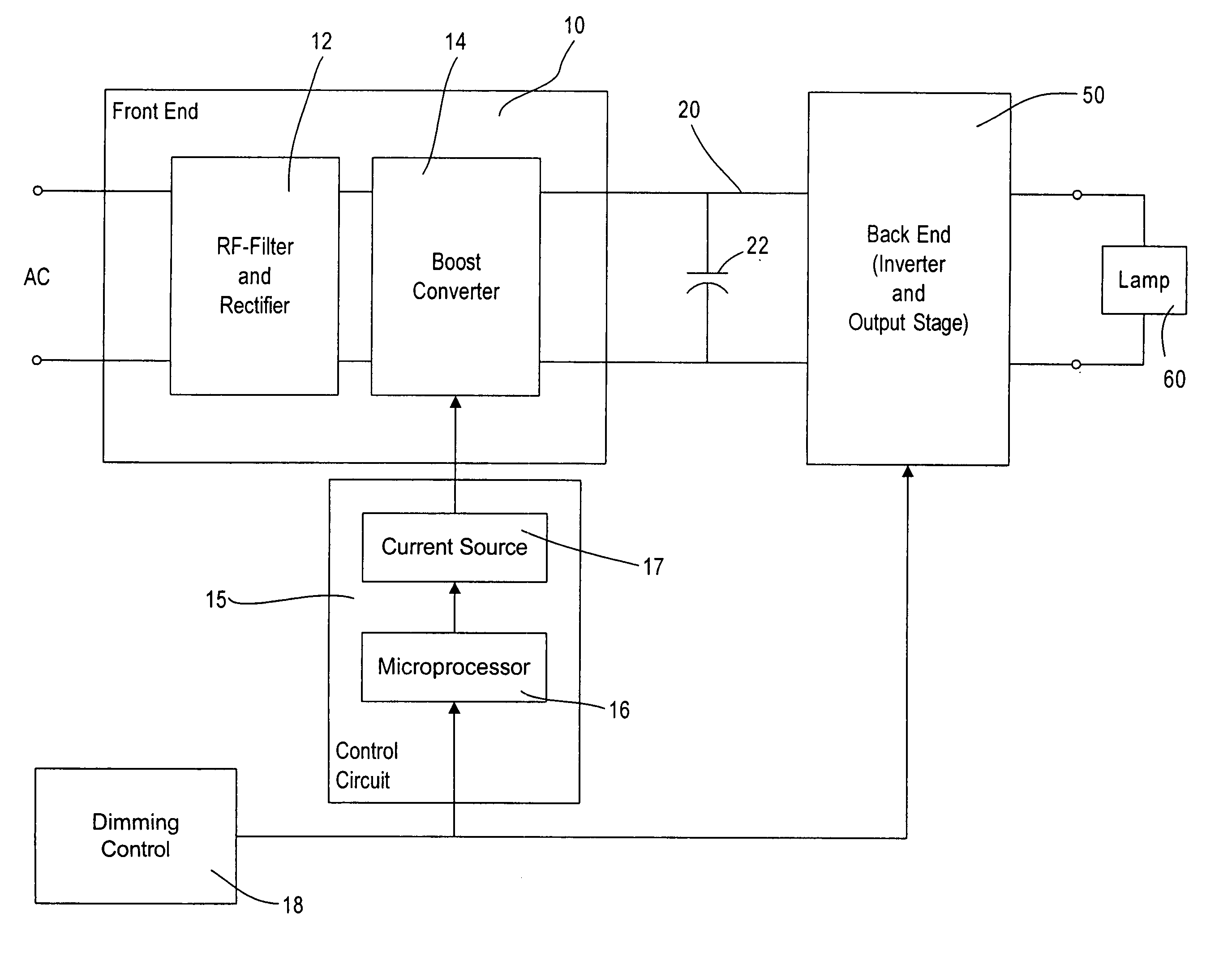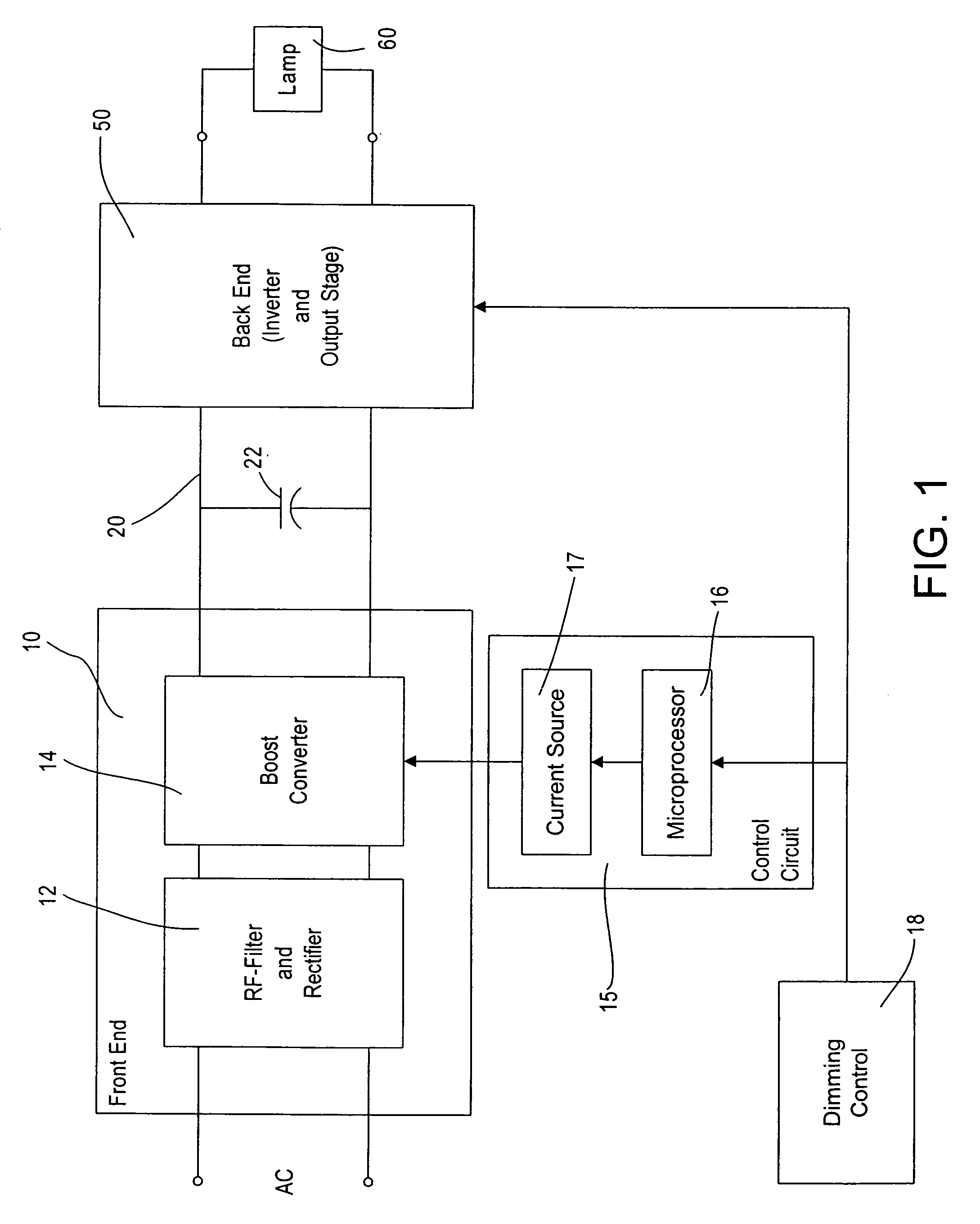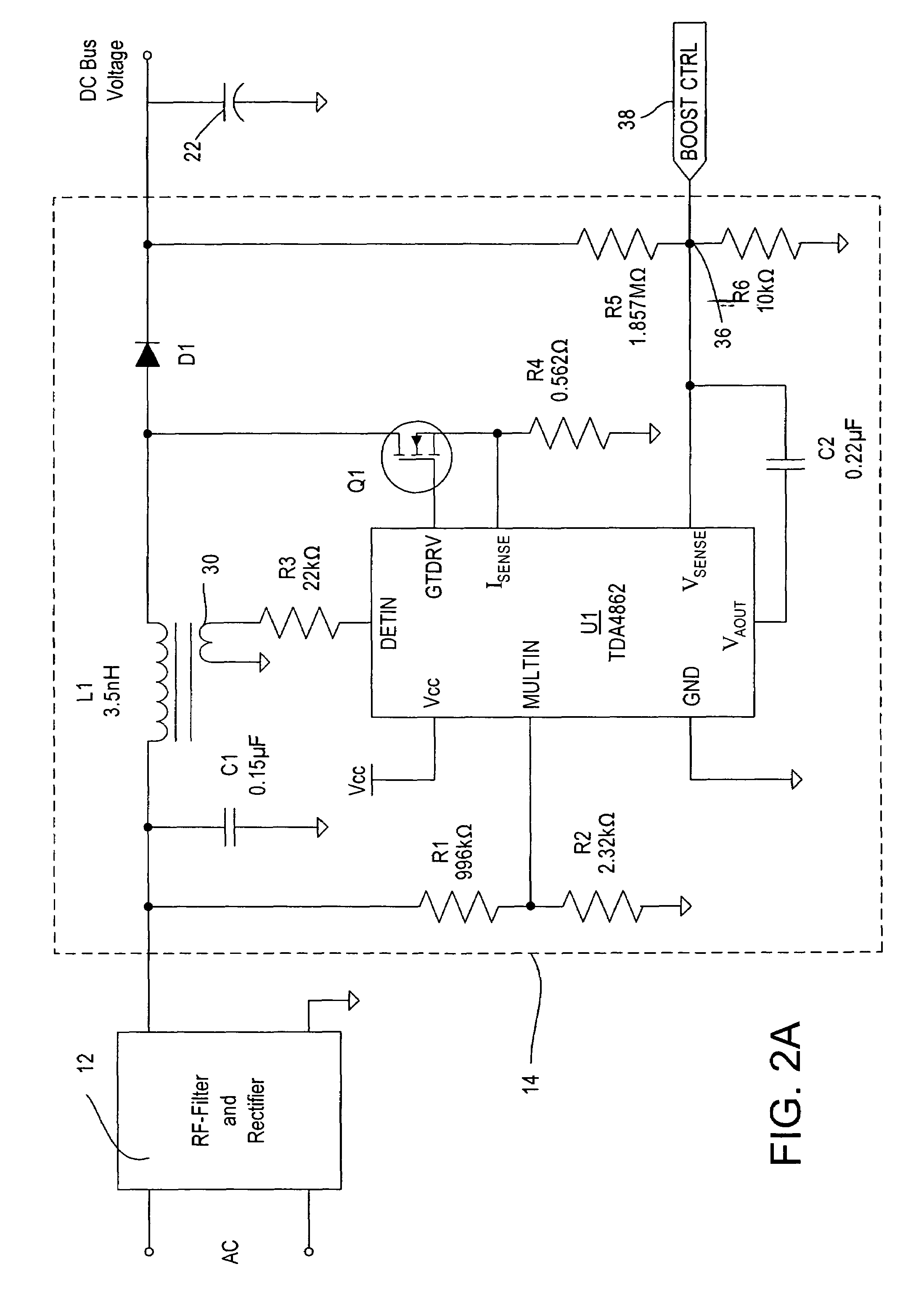Lighting ballast having boost converter with on/off control and method of ballast operation
a technology of on/off control and ballast, applied in the field of lighting ballast, can solve the problems of affecting the operation of switching transistors, and consuming approximately 5 watts of input power in typical prior art electronic ballasts. , to achieve the effect of reducing the power consumption of electronic dimming ballast and reducing the boosted voltage level
- Summary
- Abstract
- Description
- Claims
- Application Information
AI Technical Summary
Benefits of technology
Problems solved by technology
Method used
Image
Examples
Embodiment Construction
[0021]With reference now to the drawings, FIG. 1 shows a block diagram of the dimming ballast according to the present invention. The ballast has a front end circuit 10 and a back end circuit 50. The back end circuit, including an inverter circuit and an output stage, drives a lamp or lamps 60, for example, fluorescent lamps, high-energy discharge lamps, or other suitable lighting loads.
[0022]The front end circuit 10 receives an input from an AC supply, for example 277 volts RMS at 60 Hz. However, any suitable AC input voltage and line frequency can be supplied to power the ballast. The AC input is provided to an RF filter and rectifier stage 12, for example, an EMI filter stage and a full-wave rectifier, as well known to those of skill in the art. The output of the RF filter and rectifier stage 12 is fed to a boost converter stage 14 that is controlled by a control circuit 15, including a microprocessor 16 and a switchable current source 17. The microprocessor 16 receives an input ...
PUM
 Login to View More
Login to View More Abstract
Description
Claims
Application Information
 Login to View More
Login to View More - R&D
- Intellectual Property
- Life Sciences
- Materials
- Tech Scout
- Unparalleled Data Quality
- Higher Quality Content
- 60% Fewer Hallucinations
Browse by: Latest US Patents, China's latest patents, Technical Efficacy Thesaurus, Application Domain, Technology Topic, Popular Technical Reports.
© 2025 PatSnap. All rights reserved.Legal|Privacy policy|Modern Slavery Act Transparency Statement|Sitemap|About US| Contact US: help@patsnap.com



